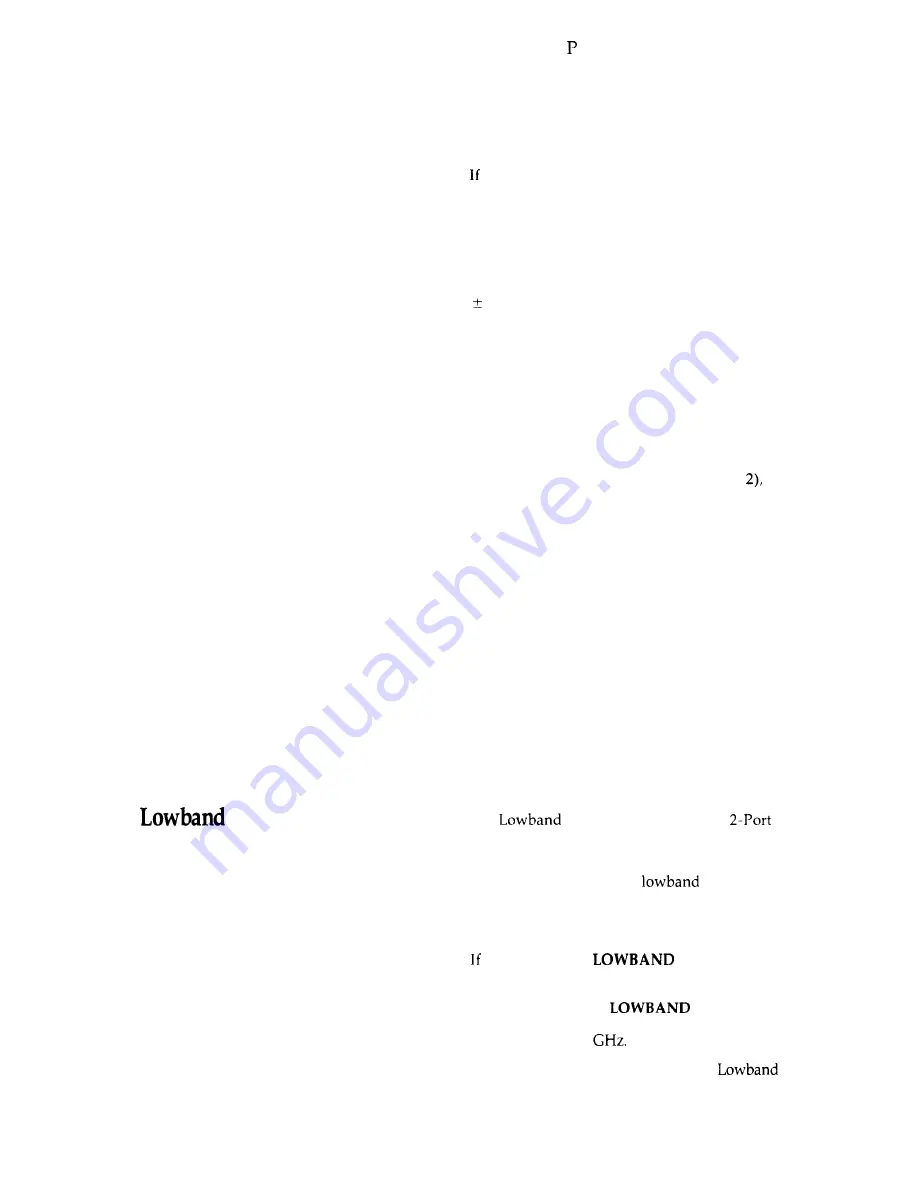
28
C
H
A
T
E R
Other Calibrations
F
0
U
R
Changing the Air Line
your application requires a frequency range slightly
Frequency Range
beyond the standard frequency range of one of the
precision air lines, you may extend the frequency range of
one of the air lines in order to accomplish the calibration by
connecting only one of the air lines.
The error coefficients are determined with best accuracy
when the Thru and the Line phase response is separated by
90 degrees at corresponding frequencies. When the
transmission phase response of a line standard is the same
or gets very close to zero or 180 degrees of the Thru
standard at the same frequency, the result becomes less
certain. The correct result cannot be determined when the
phase response is exactly equal or 180 degrees apart. This
is why a particular length air line covers a specific
frequency range.
To evaluate the phase response, first do a simple transmis-
sion frequency response calibration using the Thru
standard (Port 1 connected directly to Port
then
measure the S,, phase of the air line. The standard air line
frequency specifications provide for greater than 20
degrees separation.
Experiment with this by using the Modify Cal Kit function
to change the Minimum Frequency or Maximum
Frequency specification for the air line, and then
performing the TRL 2-Port calibration procedure. With
correction on, trace noise on the error-corrected trace may
increase at the points where the phase of the air line used
for calibration approaches the phase of the thru, often
showing large discontinuities at the point where the phase
of both standards is identical or separated by 180 degrees.
If this error is acceptable in your measurement, change the
standard label for the air line and save the redefined cal kit
on tape for later use. If the error is not acceptable, reload
the standard cal kit definition.
Reflection instead Of
The
Reflection part of the
TRL
procedure
O-2 Loads or 2-7 Line
is optional. If used, error coefficients obtained by this
procedure replaces measurements of the O-2 loads.
For this calibration kit, the
reflection part of the
calibration is typically not used because measurement of
the O-2 Loads provides better accuracy (given that the
loads are in good condition and repeatable).
you do not select
REFLECTION, the error
coefficients obtained from measurement of the TRL
standards are used over the complete current frequency
range. If you do select
REFLECTION, error
coefficients obtained from these additional calibration steps
will be used up to 2
In actual measurement applications, the
Reflection
option will not produce greater accuracy than using the O-2
Loads. If you are uncertain, it is relatively simple to compare
measurement results using the different techniques.



































